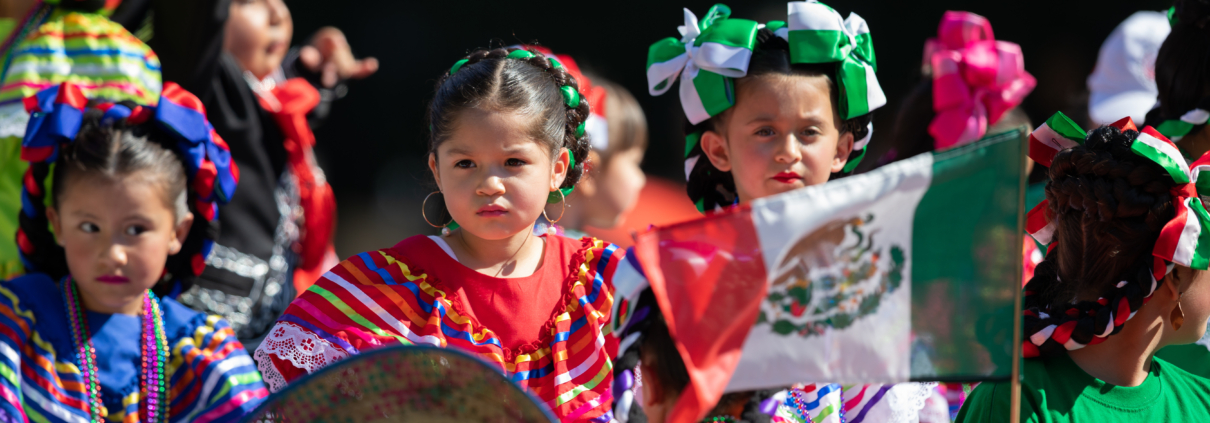Celebrating Hispanic Heritage Month with Your Family: A Journey of Culture, Language, and Connection
From September 15th to October 15th, we celebrate Hispanic Heritage Month, a time to honor the rich histories, vibrant cultures, and incredible contributions of Hispanic and Latinx communities. At Language Kids World, we see this month as a unique opportunity for families to immerse themselves in the diverse cultures of Latin America and Spain in a meaningful way. But how can we engage our children in this celebration?
Through family-friendly activities, from cultural crafts to bilingual storytelling, music, and food, we can transform Hispanic Heritage Month into a fun and educational experience for our kids. Let’s explore how you can celebrate with your family, embarking on a cultural journey that sparks curiosity and creates lasting memories.
Why Celebrate Hispanic Heritage Month?
Hispanic Heritage Month is about more than acknowledging the past. It’s an opportunity to introduce your children to diverse cultures and traditions, encouraging them to appreciate multiculturalism and global perspectives. By celebrating, we teach our children about the beauty of diversity and how Hispanic cultures have shaped the world around us.
Kick Off the Journey: A Cultural Passport Adventure
One of the most exciting ways to engage children is through an interactive activity that transforms learning into an adventure. For Hispanic Heritage Month, create a Cultural Passport for your family, allowing your children to “travel” to different Hispanic countries and experience the unique aspects of each culture.
Step 1: Create Your Passport
All you need is a small notebook or stapled paper to form a booklet. Let your children decorate their “passport” covers with drawings, stickers, or stamps of Hispanic countries. You can write “Cultural Passport” in both English and Spanish—Pasaporte Cultural—to add a fun bilingual touch.
Step 2: Pick Your Destinations
Choose a few countries to “visit” during Hispanic Heritage Month, such as:
- Mexico: Explore Día de los Muertos traditions or learn about mariachi music.
- Cuba: Dance salsa or cook a traditional dish like ropa vieja.
- Argentina: Discover tango music or the beauty of Patagonia.
- Colombia: Celebrate Colombia’s biodiversity and colorful culture.
- Spain: Learn Flamenco or explore Gaudí’s famous architecture.
Step 3: Stamp Your Passport
Each time you complete an activity related to a country, “stamp” your child’s passport. This could be a drawing of the country’s flag or a fun icon related to that nation. The more stamps they collect, the more they’ll learn about the world!
Bilingual Storytime: Bringing Hispanic Stories to Life
Hispanic and Latinx cultures are filled with vibrant storytelling traditions, and reading bilingual books with your children can be a wonderful way to introduce them to this heritage while nurturing their love for language.
Choose Bilingual Books
Here are some bilingual children’s books that tell stories from Hispanic cultures:
- “Abuela” by Arthur Dorros: A magical story about a girl and her grandmother flying over New York City, celebrating family and the Spanish language.
- “Martina the Beautiful Cockroach” by Carmen Agra Deedy: A humorous retelling of a Cuban folktale.
- “Tito Puente, Mambo King” by Monica Brown: A biography of the famous musician, introducing children to mambo and salsa music.
- “Just a Minute” by Yuyi Morales: A playful bilingual tale with a counting twist.
Host a Family Story Circle
Turn storytime into a creative, interactive event by hosting a family story circle. After reading a story, encourage your children to retell it in their own words or act it out. This activity enhances comprehension and brings stories to life in a fun and imaginative way.
Get Crafty: Hands-on Hispanic Heritage Month Art
Art is a beautiful way to engage children and connect with Hispanic culture. Here are a few simple, family-friendly craft projects inspired by Latin American traditions:
1. Papel Picado (Mexico)
Papel picado is a Mexican craft made by cutting intricate designs into tissue paper. You’ll need:
- Tissue paper in bright colors
- Scissors
- String and tape
Fold the tissue paper into small squares, cut out shapes, and unfold the paper to reveal your design. Hang the papel picado as decorations around your home.
2. Molas (Panama)
Molas are colorful, layered textiles created by the Guna people of Panama. While traditional molas are sewn, you can make paper molas using colored construction paper. Layer and glue cut-out shapes to create your design, such as animals or nature scenes.
3. Castanets (Spain)
Castanets, used in Flamenco music, are easy to make at home. You’ll need:
- Bottle caps (4 per castanet)
- A small strip of cardboard
- Glue or tape
Glue the bottle caps to each end of the folded cardboard strip. Let your children decorate their castanets, and then have fun dancing to Flamenco music.
Taste the Flavors: Cooking Together as a Family
Food is central to Hispanic and Latinx culture, and cooking together as a family can be a great way to celebrate. Here are some fun and easy recipes to try with your kids:
- Empanadas (Argentina): Let your kids help roll out dough and choose the fillings.
- Guacamole (Mexico): A simple, no-cook recipe perfect for young chefs to mash and mix.
- Arepas (Colombia/Venezuela): These cornmeal cakes are versatile and fun to fill with cheese, meats, or veggies.
- Churros (Spain): A sweet treat that’s easy to make and enjoy as a family.
Getting children involved in the kitchen builds teamwork, and sharing a meal together connects everyone to the flavors of Hispanic culture.
Music and Dance: Feel the Rhythm of Hispanic Heritage
Music and dance are central to Hispanic culture, and both are fantastic ways to engage your family in the celebration.
Family Dance Party
Create a family dance party with a playlist of Hispanic music. Try these styles:
- Salsa (Cuba/Puerto Rico): Teach simple salsa steps or let everyone move to the beat.
- Flamenco (Spain): Enjoy the dramatic strumming of Flamenco guitar and practice clapping along to the rhythm.
- Cumbia (Colombia): Cumbia’s distinctive beat makes it easy for kids to dance along.
- Mariachi (Mexico): Have your children clap to the beat or play along with homemade instruments.
Learn a Song in Spanish
Singing is a fun way to learn a language, so why not learn a simple Spanish song as a family? Try songs like “De Colores” or “Los Pollitos Dicen.” These catchy tunes will help build vocabulary while creating lasting memories.
Embracing Spanish and Bilingualism
Hispanic Heritage Month is an ideal time to celebrate the beauty and power of the Spanish language. Whether your family already speaks Spanish or is just beginning, this is a great time to explore bilingualism and the rich linguistic heritage of Hispanic cultures.
Fun Language Learning Activities
Here are some easy ways to introduce your children to Spanish:
- Label Items Around the House: Label common household items with their names in both English and Spanish, such as “silla” for chair.
- Bilingual Bingo: Create a bingo board with pictures and words in Spanish and English, and call out words in Spanish for a fun language-learning game.
- Language Apps: Explore kid-friendly apps that teach Spanish through interactive games.
Cultural Values: Teaching Empathy and Diversity
Hispanic Heritage Month offers the chance to reflect on key cultural values, such as family, community, and resilience. These lessons can be woven into your family’s celebrations, helping to instill empathy and an appreciation for diversity in your children.
The Importance of Family
Family is central to Hispanic culture. Use this time to strengthen family bonds by cooking together, sharing stories, or celebrating with extended relatives.
Teaching Diversity
Teach your children about the diversity within Hispanic communities. Explain that being Hispanic or Latinx can mean different things to different people, and that each person’s cultural background is valuable and unique.
Fostering Empathy
Have conversations about the challenges and successes of Hispanic and Latinx communities, and encourage your children to think about ways they can support others.
Attend Local Events and Celebrations
Look for local events to attend during Hispanic Heritage Month, such as:
- Festivals: These often feature music, dance, and delicious food from various Hispanic cultures.
- Museum Exhibits: Many museums offer special exhibits highlighting Hispanic art, history, and culture.
- Parades: Some cities hold parades featuring traditional costumes, floats, and performances.
Attending these events allows your children to experience Hispanic Heritage Month in a vibrant, real-world context.
A Month of Celebration, A Lifetime of Learning
Hispanic Heritage Month is a time to celebrate culture, language, and diversity, but it’s also the start of a lifelong journey for your children. By introducing them to Hispanic heritage now, you’re helping them become global citizens who appreciate and celebrate the richness of the world around them.
At Language Kids World, we believe in the power of language and culture to bring families together and inspire a love for learning. Happy Hispanic Heritage Month from our family to yours!

Founder and Director of Education at Language Kids.
M. Ed.



Leave a Reply
Want to join the discussion?Feel free to contribute!